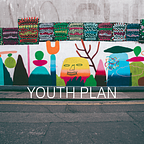Planning for Paths to Sustainability; Why is Urban Planning still so Focused on Car Traffic?
This text is authored by the project team member Kari Lehtilä (Dep. for Environment, Development and Sustainability Studies, Södertörn Univ, Sweden). Kari Lehtilä
Planning with children and youth in mind
The aim of Planning with Youth is to find ways to engage children and youth in place-making and spatial planning. Planning outcomes would probably be changed in many ways if we included children and youth in spatial planning, as examples from Sweden and elsewhere have shown. One important contribution from children and youth would probably be a priority to a safe and benign traffic environment. Car traffic restricts children’s independent mobility outdoors. It also limits possibilities for walking and bicycle riding for other groups: all those who do not have a driving license and a car, or those who want to make a choice to leave their car at home.
There are reports from different parts of the world that young people postpone the acquisition of a driving license and buying a car. This trend should be supported by spatial planning with high priority for walking, cycling and public transport. Overall, planning for a safe traffic environment should therefore be self-evident. While traffic safety is indeed considered in contemporary planning processes, the results are not always successful.
The lived experience of car-centered planning
A new shopping centre was opened late last year in a suburban area north of Stockholm where I live. There has not been much shopping lately, but sometimes a visit to the shopping centre is needed to buy stuff that is difficult to get hold of otherwise. If there is no heavy cargo on the shopping list, I prefer walking or riding a bike instead of taking a car.
Getting to the new shopping centre is, however, somewhat of a challenge. The shopping centre is a part of a larger commercial area of big stores and offices, with lots of grey infrastructure.
When I come to the commercial area, I am forced to take a detour if I want to avoid crossing parking lots with busy car traffic. Whatever path I take, pedestrian and bicycle crossings are dangerously placed near traffic circles and other places where a driver’s attention is required for many other things besides watching for walkers and bikers. I know — I’ve been driving there.
When I then approach the shopping centre, there are no entrances on the front side. I need to take a long way to the other side of the huge building. Not a problem if you drive a car, but for a pedestrian an extra 300 m walk or so beside the cement walls is an annoyance.
The traffic environment feels badly designed, and above all, it is designed for cars.
Despite that, the Detailed Development Plan of the municipality says that the area has relatively good accessibility for pedestrians and cyclists. Cykelfrämjandet, a Swedish cycling advocacy organisation, states in its comment that the plan is an example of how an Americanized automobile society is expanded to Sweden and that the current cycling design is clearly inferior. I lean on the latter statement rather than the one of the Detailed Development Plan. Routes for visitors who walk or ride a bike have been designed after everything else has already been set in place for car traffic.
The shopping centre is the first piece in planning for the whole commercial area. On its website, the municipality describes that the plan is to make the area, now having a lot of hard, grey surfaces, a mixed neighborhood of housing, shopping and business, with lush parks and alleys and lots of green space. Walking and cycling routes will be many and of high quality. Considering these plans for the whole area, the planning solution for the shopping centre is odd.
The paths we take today can limit future options
Current decisions matter, as they can limit future options — a phenomenon called path dependency. Martin Emanuel, a Swedish historian of technology, has described how the traffic infrastructure of Stockholm was, in the 1950’s and 1960’s, built with a vision of urban mobility with cars. Emanuel states that despite later trials to build an infrastructure for bicycle traffic, it is difficult to undo past decisions that are literally cast in concrete.
In the shopping centre example, path dependency does not need to be so strong, but the next steps in planning can be more sustainable.
But this will not happen if the planners do not change the path.
